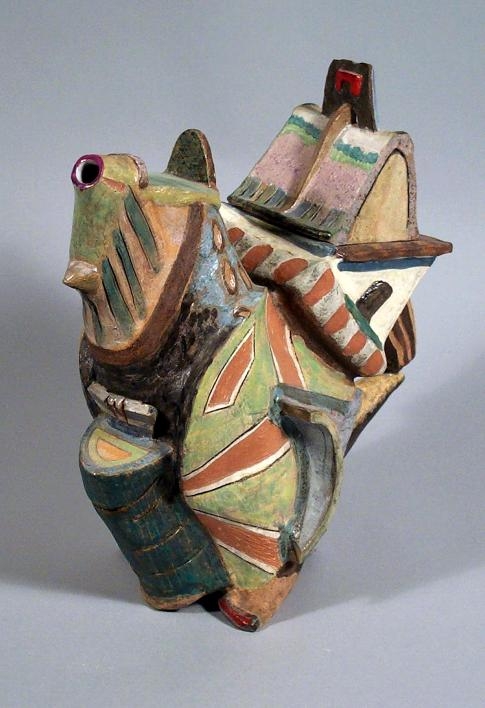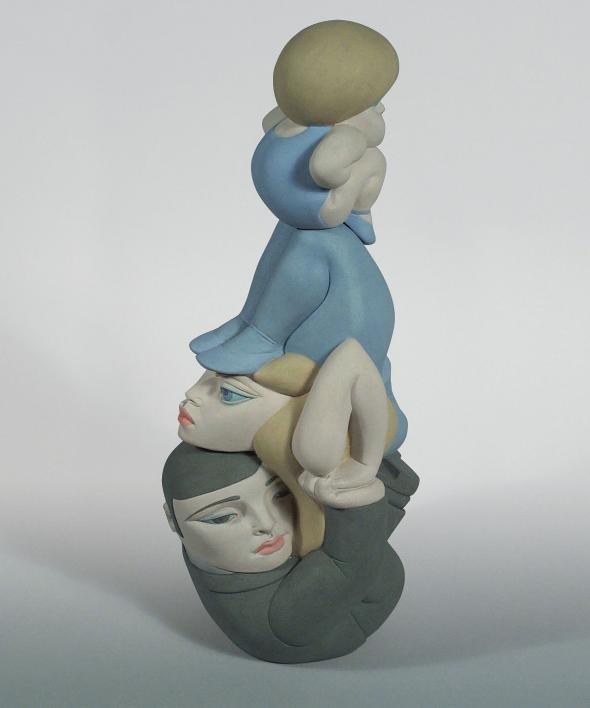Summer exhibition celebrates best of British from the Davis ceramics collection
TEMPE, Ariz. – This summer, the Ceramics Research Center at the ASU Art Museum will celebrate the donation that launched its collection to new heights six years ago, when it presents British Ceramic Masterworks: Highlights from the Anne and Sam Davis Collection.
Running June 25 – Sept. 25, the exhibition will present a hand-picked selection of work from the 315-piece collection donated by the Davises in 1998. The donation took the ASU Art Museum’s ceramics collection to an internatioal level, adding depth and breadth to its already substantial holdings of work by late 20th century American ceramists.
A free public reception from 7-9 p.m. on June 25 will open British Ceramic Masterworks, which was curated by Peter Held, the ASU Art Museum’s curator of ceramics.
“This exhibition will illustrate the depth and variety of British ceramics created since the 1950s, ranging from functional pottery to figurative sculpture,” Held said.
Held has selected works from the British ceramists in the Davis collection, with a special emphasis on the relationships between the work of teachers and students, sometimes exploring this through three generations.
Despite the wide range of styles and techniques used by the British ceramists in this exhibition, many of them were connected by the institutes at which they studied and by the ceramic artists who taught them. Following the evolution of pottery forms from one generation of British ceramists to the next makes this an exhibition with great depth.
The names of Lucie Rie and Hans Coper, for example, are often linked because of their close collaboration at Rie’s Albion Mews Pottery in London. Both favored wheel-thrown forms that emphasized form and texture with a minimum of decoration.
Both artists taught Ewen Henderson, another ceramist featured in this exhibition, but while Henderson started his career producing domestic, functional pottery, he chose to explore the possibilities of clay and fire in his hand-built vessels. The interesting surface textures on his vessels were created by using different types of clay, often colored with stains, which developed fissures and cracks during the firing process.
Henderson, in turn, taught Angus Suttie, who chose to work with hand built forms as did his teacher. Yet his pots, known for their exuberant color and bold shapes, retained their relationship with domestic ware, particularly the teapot.
Anne and Sam Davis selected the ASU Art Museum as the recipient of their collection for three major reasons. They wanted it to stay in the western United States and to make a significant difference to the collection that received it. They also knew their collection would not only complement and enhance the museum’s collection, but would balance the entire holdings.
Anne Davis, who was originally from England, collected ceramics from some of the most influential British studio potters, including Michael Cardew, Bernard Leach, Lucie Rie and Hans Coper. The couple’s collection also consists of the work of other major artists including Alison Britton, Joanna Constantinidis, Stephen Dixon, Nicholas Homoky, Peter Lane, Alan Caiger-Smith, Angus Suttie, Geoffrey Swindell and George Walker, among others.
The ASU Art Museum is a division of The Katherine K. Herberger College of Fine Arts. The museum’s Ceramics Research Center is located on the northeast corner of Mill Avenue and 10th Street, Tempe. For more information, members of the public should call the ASU Art Museum at (480) 965-2787.
The ASU Art Museum was named “the single most impressive venue for contemporary art in Arizona” by “Art in America.” It is a division of the Herberger College of Fine Arts at Arizona State University. To learn more about the museum, visit http://asuartmuseum.asu.edu.
Media Contact:
Denise Tanguay
480.965.7144
denise.tanguay@asu.edu

